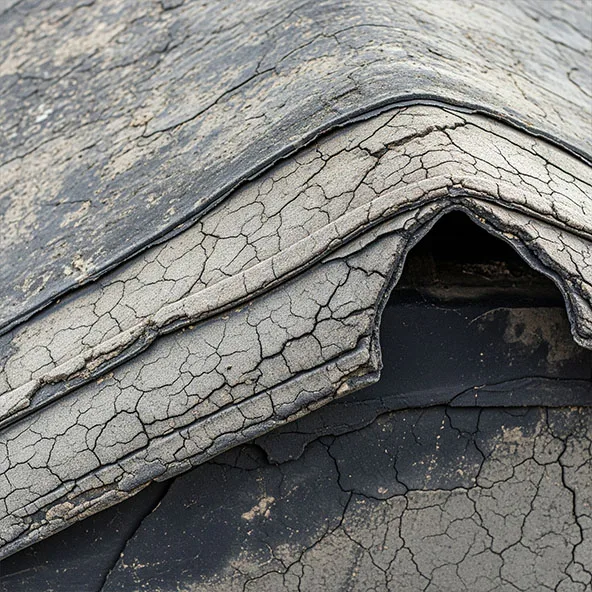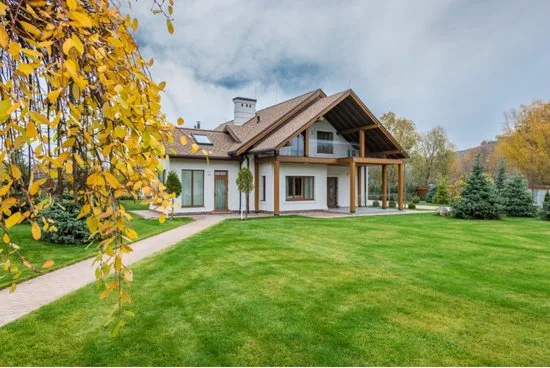If you’re a homeowner wondering how long should a rubber roof last, the answer lies in a combination of quality materials, proper installation, and consistent maintenance. Rubber roofs—particularly those made from EPDM (ethylene propylene diene monomer)—have become a leading choice for flat roofing systems across the U.S., thanks to their durability, weather resistance, and long-term energy efficiency.
Whether you’re installing a new roof or replacing an aging one, understanding how rubber roofing materials perform in real-world conditions will help you make a smart, cost-effective decision for your home.
Understanding Rubber Roofs and Their Lifespan
Rubber roofs are commonly installed using EPDM membranes, which are synthetic rubber materials engineered to handle extreme weather conditions. These include UV rays, sharp objects, rain, sun, and even fire. With proper installation by licensed roofing contractors, rubber roofs installed correctly can last between 30 to 40 years—or even longer with regular maintenance and protective coating materials.
In contrast to asphalt shingles, which typically offer a life expectancy of 15 to 25 years, or metal roofs, which can range from 40 to 70 years but come with higher installation costs, rubber roofing offers a balanced solution for flat roofs. It combines affordability with a watertight seal, minimal maintenance, and high-performance longevity.
Why EPDM Is a Favorite Among Roofing Contractors
So what makes an EPDM roof a standout among other roofing materials?
Weather resistance: EPDM membranes are resistant to moisture, UV rays, and thermal expansion, making them ideal for regions with harsh weather conditions.
Energy efficiency: Available in black or lighter color options, EPDM roofs help with insulation, regulating indoor temperatures and reducing heating and cooling costs.
Seam security: With professional seam tapes and adhesives, seams in the rubber membrane are sealed tightly to prevent water penetration.
Installation versatility: Whether fully adhered, mechanically fastened, or ballasted, EPDM roofs can be tailored to suit the unique structure of your building.
Low impact maintenance: Unlike modified bitumen, PVC, or TPO, EPDM requires far less frequent repairs, provided that regular inspections are done to check for debris, ponding water, or minor tears.
Factors That Affect Rubber Roof Life Expectancy
Even with the best EPDM material, a rubber roof’s longevity depends on several variables:
Installation quality: Professional installation ensures the rubber membrane lies flat, sealed, and without bubbles, tears, or misaligned seams.
Weather events: Severe rain, hail, or high winds can reduce a roof’s life expectancy if the roofing membrane isn’t inspected and maintained regularly.
Roof slope and drainage: Flat roofs with poor drainage are vulnerable to ponding water, which can degrade the membrane over time.
Maintenance routine: Small problems like debris accumulation or loosening edges can escalate without regular inspections.
Material’s durability: Not all EPDM membranes are created equal. Always opt for high-grade rubber with UV and fire resistance for the best outcome.
Comparing Rubber Roofs to Other Roofing Materials
When comparing rubber roofing to other materials, like asphalt shingles, modified bitumen, or metal, EPDM consistently stands out for flat roofs.
- Asphalt shingles work well on sloped roofs but fail to perform efficiently on flat surfaces due to poor drainage and limited flexibility.
- Modified bitumen is another flat roofing solution but typically has a shorter lifespan and higher maintenance demands.
- Metal roofs offer excellent durability and a long lifespan, but their high installation cost often makes them less appealing for smaller residential projects.
- PVC and TPO roofs are solid contenders in the commercial space, though they often require complex installation techniques and specialized equipment.
- Rubber, on the other hand, offers simplicity, flexibility, and impressive longevity, especially when topped with a coating that reflects heat and improves energy efficiency.
Maintenance Tips to Extend Your Roof’s Life
To make sure your EPDM roof reaches its full life expectancy, adopt a proactive approach:
- Inspect twice a year: Perform regular inspections in spring and fall, or after severe weather events.
- Clean off debris: Leaves, branches, or gravel can scratch the surface or clog drainage systems.
- Apply coatings: Consider using coating material every 5-10 years to enhance UV protection and waterproofing.
- Fix small issues fast: Seal minor tears with EPDM patch kits or rubber-compatible coatings before they escalate into bigger problems.
- Hire a contractor: For more complex repairs, bring in a certified roofing contractor to ensure quality workmanship.
The Value of Investing in a Rubber Roof
If you’re still asking “how long should a rubber roof last,” the answer lies in how much care you’re willing to invest. With proper attention, a rubber roof can last as long as 40 years, offering decades of protection, low operating costs, and fewer worries compared to other roofing materials.
And when the time comes to replace your roof, opting again for EPDM can be a smart, sustainable choice—especially with new rubber roofs installed using advanced materials and energy-efficient coating options.
Final Thoughts
A rubber roof may not be as flashy as slate or metal, but it’s a workhorse for any homeowner seeking durability, weather resistance, and low-maintenance peace of mind. The key is proper installation, regular upkeep, and knowing your material’s durability.
So, how long should a rubber roof last? With the right conditions—up to 40 years. And that’s a number homeowners can feel confident about.
Whether you’re planning your next installation or looking to extend the life of your current roofing membrane, an EPDM system is a durable, cost-effective solution worth considering.

